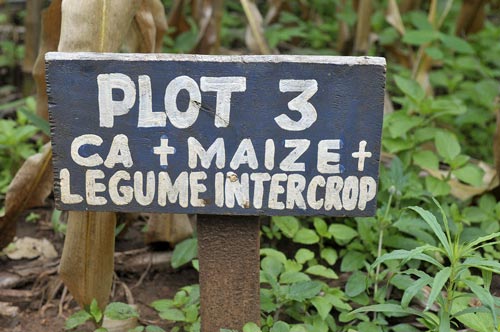
CIMMYT, Washington State University and Total Land Care (TLC) recently published a series of extension bulletins to spread awareness of the potential benefits of conservation agriculture (CA) techniques for farmers in Malawi.
The study, “Sustainable Intensification and Diversification on Maize-based Agroecosystems in Malawi,” took place over three years in the districts of Nkhotakota and Dowa, and was sponsored by the CGIAR Research Program on Maize through a Competitive Grants Initiative.
Over the study period, three different cropping systems — zero-tillage, conservation agriculture, and conventional tillage — were applied to smallholder farms. The three extension bulletins detail their respective impacts on crop yields and residue production, soil-water relations and the economic impacts for smallholder households.
The bulletins have been printed for distribution to Malawian extension agents and non-governmental organizations and, ultimately, to share with farmers.
The Findings
In the study, the zero-tilled maize plots incorporated only two of the three principles of CA – no tillage and residue retention – but not crop rotations, while conservation agriculture and conventional tillage incorporated diverse cropping systems.
It was found that crop rotations had the greatest impact on maize yields, leading to higher yields in conservation agriculture and conventional tillage than in continuous no-till maize.
Water infiltration was greatest in no-till maize and conservation agriculture, with 90 percent of applied water infiltrating into soils in the no-till plot and 60 percent under conservation agriculture, in Nkhotakota District. Sediment runoff was greatest in conventional tillage in both districts.
The study found that conservation agriculture used labor more efficiently than conventional tillage in smallholder plots, although variable costs were lowest in conventional tillage.
The authors of the bulletins are Dan TerAvest (Washington State University), John Reganold (Washington State University), and Christian Thierfelder (CIMMYT).
The bulletins are available in PDF format and can be downloaded here.
 Climate adaptation and mitigation
Climate adaptation and mitigation 
